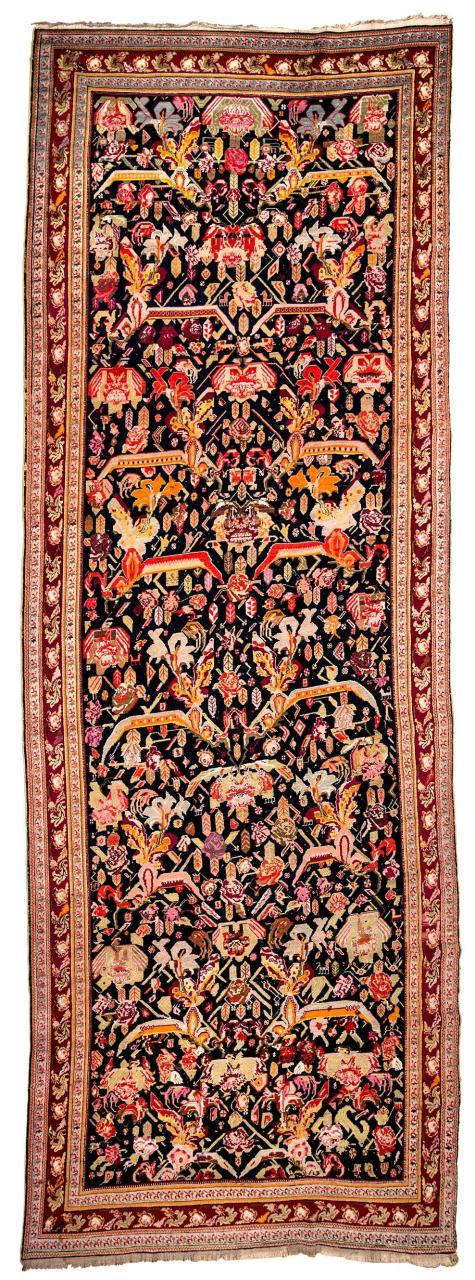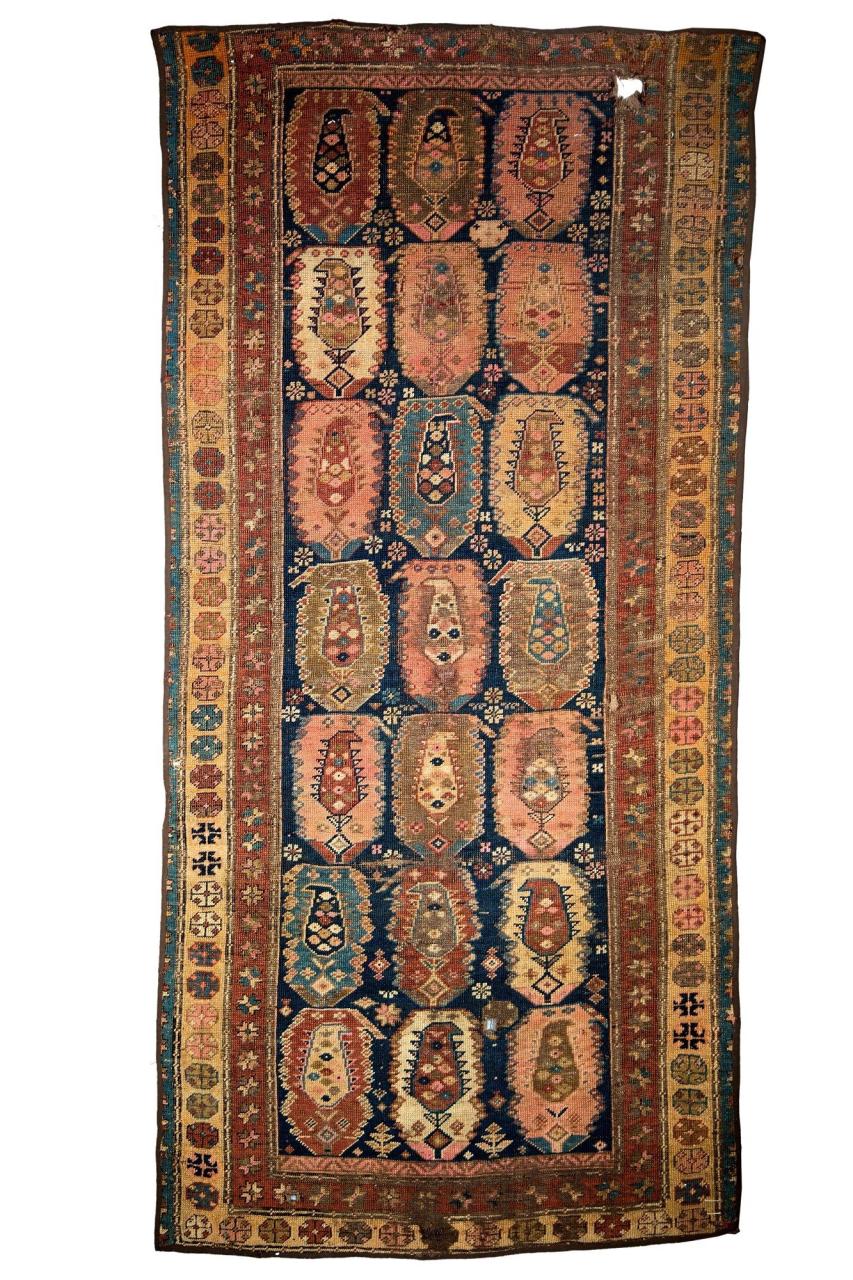Carpet Museum highlights Karabakh carpet weaving art [PHOTO/VIDEO]
![Carpet Museum highlights Karabakh carpet weaving art [PHOTO/VIDEO]](https://www.azernews.az/media/2017/12/29/azerbaijan_carpet-museum_1.jpg)
By Laman Ismayilova
The National Carpet Museum continues its fascinating journey throughout its extensive collection.
The Museum has provided insight into Karabakh carpet weaving art. Let's take a closer look at some of them.
Baghchada Gullar carpet
The unique ornaments of Karabakh carpets are famous for their artistic value and originality.
The early-20th-century Baghchada Gullar carpet of Karabakh stored in the museum collection depicts a flower khari-bulbul.
Khari-bulbul (Óphrys mammosa) is a rare endemic plant of the Azerbaijani flora, a local variety of orchids. Khari-bulbul is considered a symbol of Shusha and grows mainly in the local mountains and Jidir plain. This unique flower symbolizes tenderness, beauty, and courage.
Shabalid-Buta carpets
Shabalid-Buta carpets belong to the Karabakh carpet group. The main centers for their production are Agdam, Jabrail, and Mugan. Buta ornaments turned left and right and arranged in a row adorn the carpet's central field.
The artistic quality of the carpet is determined by the distance between the buta elements in the central field. The closer they are to each other, the more beautiful the carpet pattern is considered. There are also Shabalid-Buta carpets decorated with buta with a tassel or crooked buta.
Ram-shaped gravestone
Ram-shaped gravestones were especially common in Azerbaijan in the 15th-16th centuries. Male gravestones mostly depicted daggers, sabers, pistols, guns, and household items.
This ram-shaped gravestone comes from the country's Lachin region. The Turkic tribes were engaged in cattle breeding, and the figure of a ram was considered by them a symbol of abundance and courage. Since the presented gravestone depicts male accessories and weapons, one can safely say that this burial belongs to a warrior. Moreover, the weapon image on the stone symbolizes strength, bravery, and power.
Moreover, the museum also released a new video. The video features Sabina Gurbanova, curator of the Pile and Flat-Woven Carpets collection shows us the rules of storing carpets in the museum fund.
Founded in 1967, the National Carpet Museum holds more than 14,000 exhibits of the finest Azerbaijani carpets.
The museum, initiated by eminent carpet artist Latif Karimov, is beautiful inside and out. The museum's new building is designed in the form of a rolled carpet.
The Carpet Museum opened its doors in 2014 at Baku Seaside Park. All carpets were transferred to the museum's new location.
In 2019, the museum received the national status for its significant contribution in popularization and promotion of the Azerbaijani Carpet Weaving Art.
Now, the museum hosts multiple events, including international symposiums, conferences and various exhibitions.
The Carpet Museum has recently marked the 10th anniversary of the inclusion of Azerbaijan's carpet weaving art in UNESCO's Intangible Heritage List.
Public and cultural figures have gathered at the National Carpet Museum to mark this significant date.
The project entitled "Unpainted woollen carpets in the practice of the Azerbaijan National Carpet Museum" was also presented as part of the event.
The museum displayed the replicas of five classic carpets, including "Shamakhi", "Khila-buta", "Khatai", "Ajdahali", "Nakhchivan", stored in the museum's collection. Natural shades of wool are used in the decor of these carpets.
---
Laman Ismayilova is AzerNews’ staff journalist, follow her on Twitter: @Lamiva993
Follow us on Twitter @AzerNewsAz
Here we are to serve you with news right now. It does not cost much, but worth your attention.
Choose to support open, independent, quality journalism and subscribe on a monthly basis.
By subscribing to our online newspaper, you can have full digital access to all news, analysis, and much more.
You can also follow AzerNEWS on Twitter @AzerNewsAz or Facebook @AzerNewsNewspaper
Thank you!


